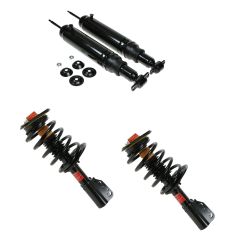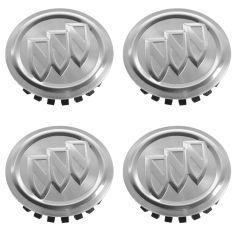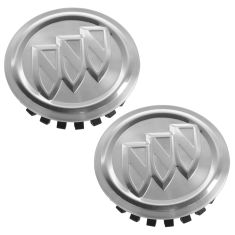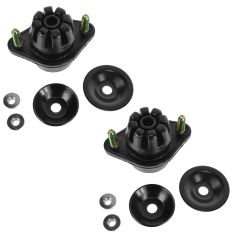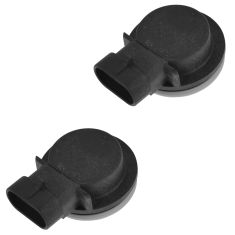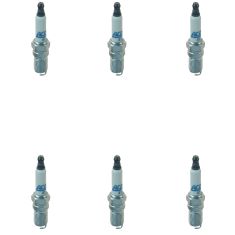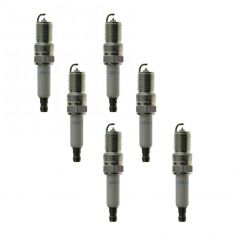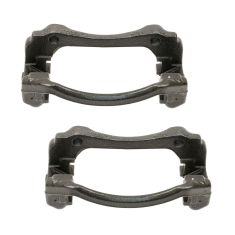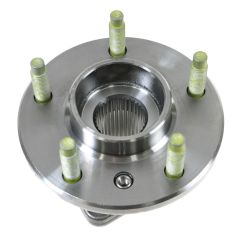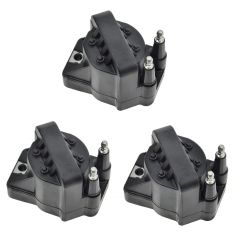Buick LeSabre
-
Notify When Available
Replaces Buick Cadillac Olds Front & Rear 4 Piece Shock & Strut Kit Monroe Quick-Strut MNSSP00900
Brand: Monroe Quick-Strut - MNSSP00900Out of Stock
$ 434.95 -
Notify When Available
Replaces Buick Wheel Center Cap 4 Piece Set General Motors OEM GMWHK00020
Brand: General Motors OEM - GMWHK00020Out of Stock
$ 288.95 -
Notify When Available
Replaces Buick Wheel Center Cap 2 Piece Set General Motors OEM GMWHK00019
Brand: General Motors OEM - GMWHK00019Out of Stock
$ 149.95 -
Notify When Available
Replaces Buick Cadillac Pontiac Olds Rear Driver & Passenger Side 2 Piece Strut Mount Set Monroe Strut-Mate MNSFK00021
Brand: Monroe Strut-Mate - MNSFK00021Out of Stock
$ 59.95 -
Notify When Available
Replaces 2000-05 Buick LeSabre Front Bulb Socket 2 Piece Set ACDelco ACLPP00001
Brand: ACDelco - ACLPP00001Out of Stock
$ 37.91 -
Notify When Available
Replaces Chevrolet Buick Pontiac Olds 6 Piece Spark Plug Set ACDelco ACETK00004
Brand: ACDelco - ACETK00004Out of Stock
$ 49.86 -
Notify When Available
Out of Stock
$ 61.22 -
Notify When Available
Replaces Chevrolet Buick Pontiac Olds Front Remanufactured Disc Brake Caliper Bracket 2 Piece Set Cardone Reman CABCS00013
Brand: Cardone Reman - CABCS00013Out of Stock
$ 63.95 -
Notify When Available
Out of Stock
$ 266.34 -
Notify When Available
Out of Stock
$ 196.69
In the New Line for ‘59
The Buick LeSabre has seen an interesting evolution throughout its forty-year life. 1959 marked the release of the first Buick LeSabre, alongside the Invicta and Electra, with a 250 horsepower V8. It was covered in chrome from the shiny hub caps and wraparound bumpers to the slim lines streaking down the side. It came with classic fins, a wraparound windshield, and was promoted as the entry-level luxury vehicle for Buick. It was quite a versatile car, and could be owned by anyone since it offered a convertible, two and four-door hardtop, a two and four-door sedan, and station wagon model. This was the vehicle line that would become Buick's full-size automobile for the next four decades.
The Long-Lasting LeSabre
In the ‘60s, porthole windows were added, fins were dropped, and the horsepower was bumped up to 280. A new trim was introduced, known as the "Custom," which would remain with the line until its end. By the ‘70s, a new 455 cubic inch V8 engine with 370 horsepower was optional, but regulations would make it hard for the LeSabre to keep its power. It took drops in horsepower from 315 to 250 in the following year. Automatic transmission became the standard, power brakes and steering were included, and the convertibles were discontinued in 1972. In 1976, the LeSabre became the first full-size American car with a V6 as the standard engine. The V8s would last for a few more years before being eliminated, and, in 1980, the port holes were dropped while the car became much shorter and lighter.
By the mid-80s, the LeSabre switched to front-wheel drive and the V6 could kick 165 horsepower which later improved to 205. In the ‘90s it released a new premium trim and was only available as a four-door sedan, but it was still a full-size favorite. They were desired for their reliability, spacious cabin, large storage space, and exceptionally smooth ride.
A "Celebration Edition" was released in 2003 after a ten-year stint as America's best-selling full-size sedan. It may have lost its pizzazz since the ‘90s, but the LeSabre kept up with the times and had great features such as a keyless remote and cruise control on the Custom trim, and an electrochromatic rearview mirror, power seats, OnStar assistance, and side-impact airbags on the Limited trim. It was discontinued in 2005, but it will be remembered as one of the best full-size cars for its safe and reliable performance.
Did You Know?
Featured in 1951 on Motor Trend's cover, the LeSabre got its name from a concept car designed by GM chief automobile designer Harley J. Earl. It had a V8 with a 29.5 PSI supercharger that could put out 335 horsepower. But the real boost came from the futuristic features. The grille revolved into a dual headlight set for nighttime travel, it had an accessible built-in retractable jack for easy wheel repair, air scoops were on the rear to cool the brakes and battery, a compass was in the dash, and an automatic sensor was installed that could raise the window and retractable roof at the first sign of rain. With features like these, it's easy to see why Mr. Earl took the vehicle home as his own personal car.
